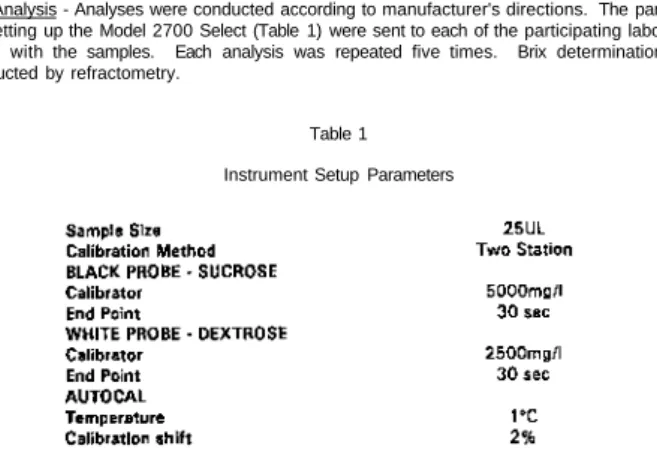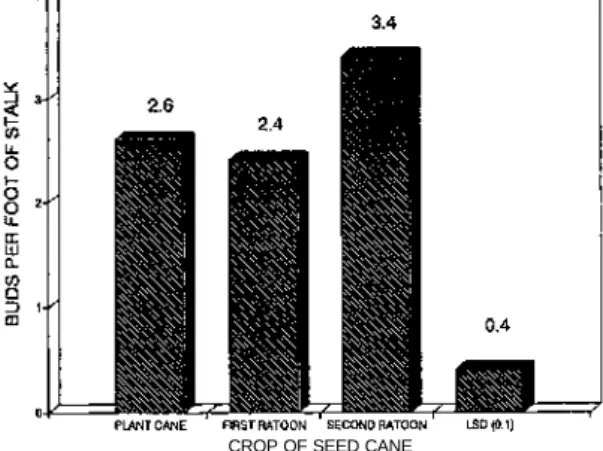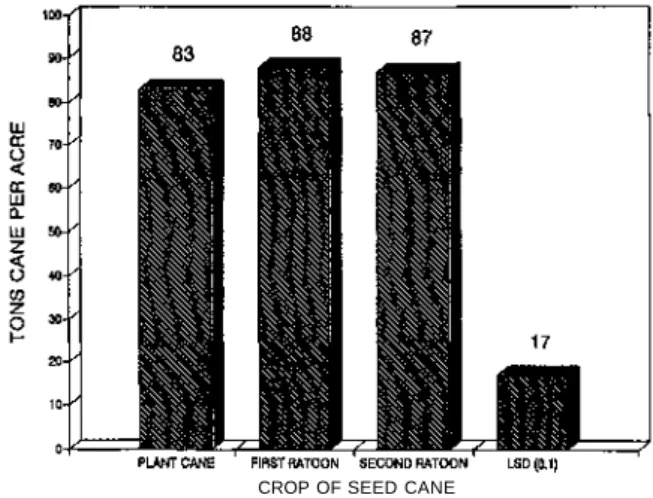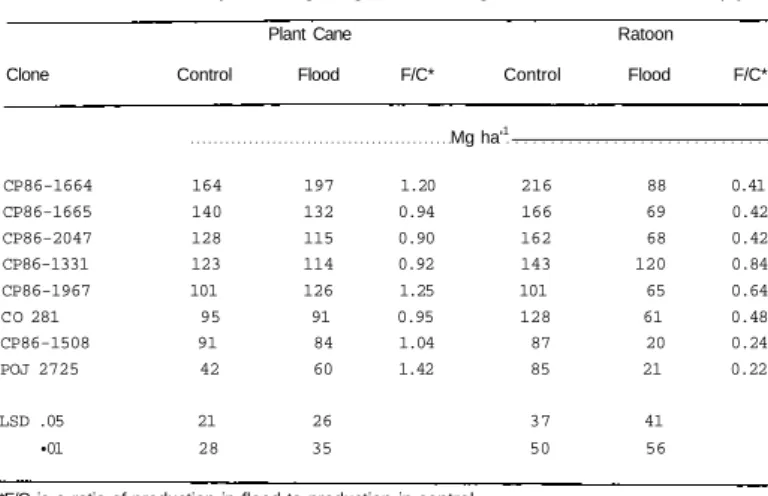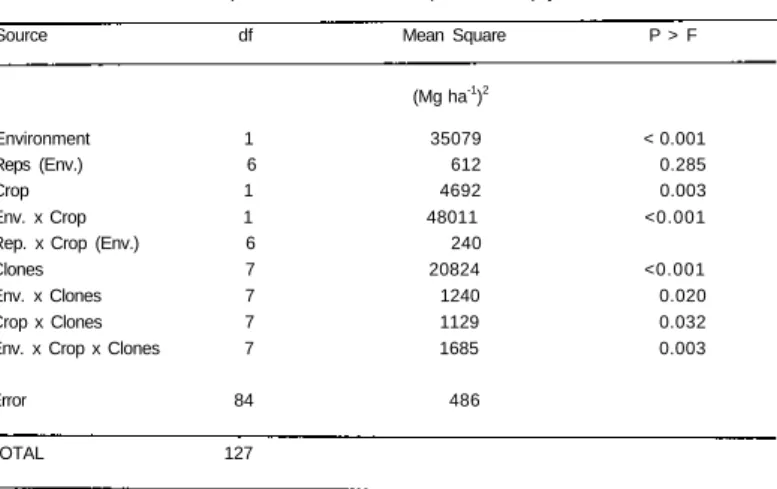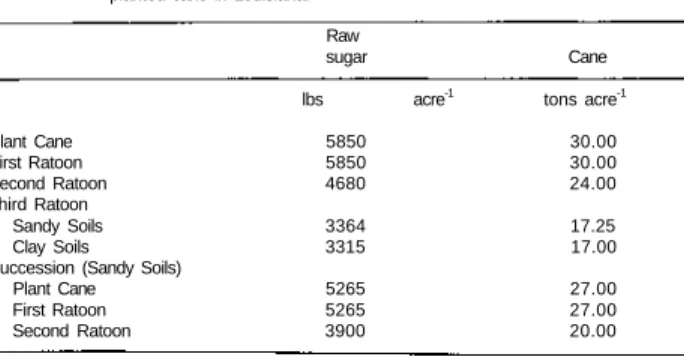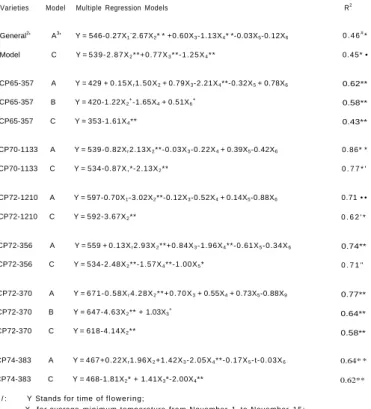In two of the three experiments, there were no differences in cane yield as a result of harvesting seed cane. The cane yield of seed cane from the plant and first ratoon crops did not differ significantly. However, second ratoon seed cane produced significantly more cane per acre than seed cane of the plant crop.
The overall F value for the interaction of seed cane crop and cultivar was not significant (P = 0.30) (Table 1). Number of buds per ft of stem on seed cane from plant, first ratoon and second ratoon crops. This experiment compared the yields of three cultivars and three crops of seed cane (Table 3).
Sugar concentrations and sugar tonnages were similar for all three cane crops. Use of second-ratoon seed tubes resulted in significantly greater stem weight than plant-crop seed tubes.
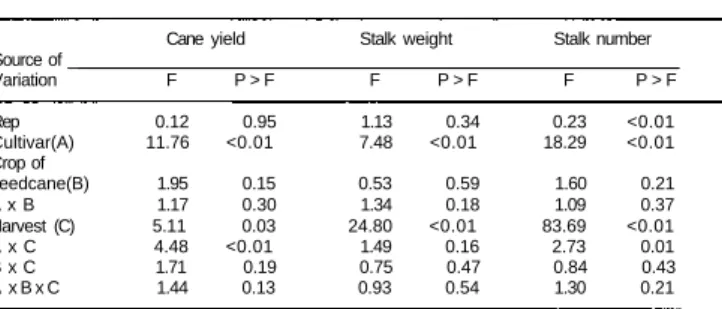
C. Comstock
This concentration was chosen because it provided 100% mortality of sugarcane borer larvae in the first laboratory assay. In the laboratory, nematodes emerged from only one of 17 dead grubs taken from treated cane; these nematodes appeared to be S. For a third raton option scenario, the only difference is that half of the fallow land (100 hectares) in the traditional rotation remains in waste in the non-traditional analysis.
The yields at which a third raton crop becomes profitable were identified and used in evaluating third raton alternatives in the simulation model. The previous plan included 100 hectares that could be held in rotation as a third raton option. Successive planting on sandy soils replaces the third ratoon option up to the maximum allowed in the model.
This means that the farm achieved a reduction in the average cost of production throughout the production process. Economies of size in the Mississippi River Delta (Persistent adaptations over time to exogenous and endogenous change).
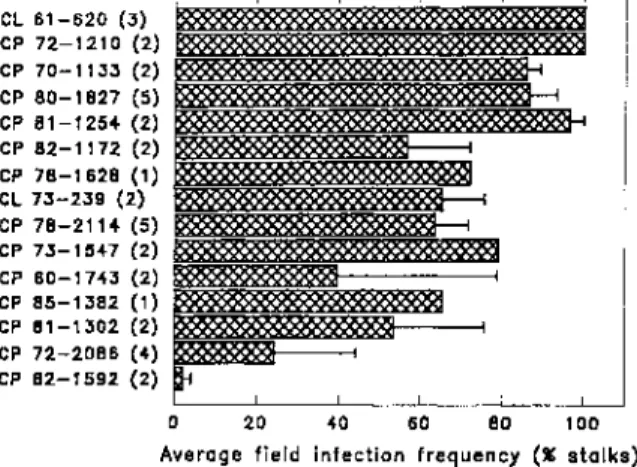
D. Miller
Experiments were initiated to determine the cold tolerance performance obtained after a first or second cycle of recurrent selection. Results from a two-year test showed that the heritability of cold tolerance was low in both populations. The frequency of clones with better cold tolerance than the commercial control, NCo 310, was 8% for the commercial variety x commercial cultivar population and 22.2% for the backcross-polycross population.
Cold tolerance of sugarcane is classified into three categories: resistance of leaves and buds to frost damage, resistance of mature stems to freezing and subsequent deterioration, and ability to sprout after a severe winter (1,9). The gain from selection for cold tolerance is expected to be small due to the number of loci and years required to accurately assess clonal phenotypes. The objective of this study was to determine cold tolerance performance after the first and second cycles of repeated selection of sugarcane.
Percentage of seedlings selected for better cold resistance in progeny obtained from biparental crosses and polycrosses. Cold tolerance estimates based on green leaf area after natural freeze were made in January (plant cane, 27°F for about 1 hour) and November (first raton, 29°F for about 1 hour). Mean squares for the mixed model cold tolerance test of both selection groups (commercial x commercial and backcross-polycrosses).
In the initial populations, the number of clones with superior cold tolerance varied between crosses (Table 1). The results indicated that relatively few clones with superior cold tolerance were derived from biparental crosses and polycrosses. One parental clone, US 72-1151, tended to produce more progeny with superior cold tolerance than the other parental clones (Table 1).
In the selected populations, the percent frequency distribution for cold tolerance based on the two-year test indicated that commercial cultivar x commercial cultivar population appeared to be very normal, while the backcross-polycross population appeared skewed toward a higher rating of cold tolerance ( Fig. .1). The average cold tolerance numbers were 61.88 for the commercial cultivar x commercial cultivar population and 63.9 for the backcross-polycross population. The percentage of clones that exceeded the commercial control cultivar, NCo 310, in cold tolerance was 8% for commercial x commercial population and 22.2% for BC population.
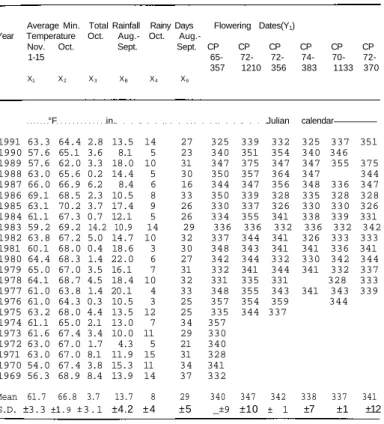
COLD TOLERANCE SELECTIONS
Sarkar and F. Day Sugar Station/Audubon Sugar Institute
Presented at the 22nd Annual Joint Meeting of the American Society of Sugarcane Technologists. In this configuration, the nozzle was mounted on the spray boom directly above the center of the row. With the exception of AC 263,222 at 0.11 kg ha-1, all treatments controlled johnsongrass at levels equivalent to terbacil by 8 WAT in study B (Table 2).
All of the herbicide treatments controlled johnsongrass long enough to produce stem numbers similar to the standard terbacil treatment. Little or no damage was observed at 4 and 8 WAT with asulam at 3.74 kg ha-1, regardless of application date. Almost all of the histosols in the EAA potentially available for agricultural production are currently under cultivation.
Therefore, the continued expansion of the sugar cane industry will take place on the sandy mineral soil adjacent to the EAA. Magnesium content in the 30 to 45 cm depth was not altered by dolomite application (data not shown). Most of the yield benefit resulting from pre-plant dolomite incorporation was evident in the first ratoon crop.
Therefore, the continued expansion of the sugarcane industry will require increased production in the sandy mineral soils near the EAA. Spodosols, primarily of the aquod suborder, are the dominant mineral soils used for sugarcane production in Florida (Anderson, 1990). Dolomite amendment resulted in increased sugarcane and ratoon sugar yields for nine of the ten cultivars evaluated (Table 3).
The sugar yield of the dolomite-amended first-ratoon crop averaged 84% of the cane sugar yield. The sugar yield of the unaltered first-ratoon crop averaged 27% of the plant's cane sugar yield. The sugarcane stumps at the study sites were destroyed by disking after the harvest of the second ratoon crop.
The growth and development of the subsequent plant-cane crop was suppressed where bermudagrass was not controlled. Many articles and presentations from the American Society of Sugar Cane Technologists use multiple comparison procedures. RULES FOR PREPARATION OF PAPERS TO BE PRINTED IN JOURNAL OF THE AMERICAN SOCIETY OF SUGAR CRE TECHNOLOGISTS Format.
The dash key is located on your keyboard to the right of the numeric zero.
